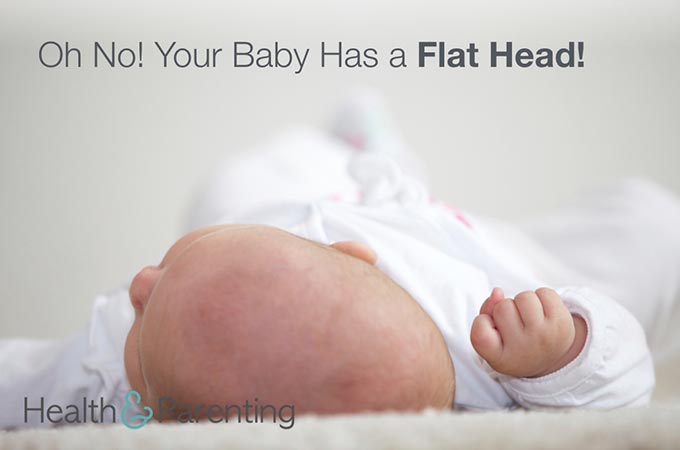If you were to ask most new moms what the sweetest things about their newborn are, they would probably give you a list something like this:
- The baby smell
- The tiny toes
- The soft spot
Because, yes, as weird as it may sound—that soft spot on a baby’s head is precious. And you would be hard pressed to find a new mom who hasn’t spent a fair amount of time caressing that spot as her baby sleeps.
But it turns out, that soft spot could also be responsible for your baby suffering from a flat head. Kind of.
Before we can explain how that happens, though, we need to understand what the soft spot is all about. The simplest explanation is that when babies are born, their skulls aren’t yet fully fused together—allowing gaps so that his or her little head can be pushed through the birth canal. Those gaps will slowly close over the next two years, accommodating your baby’s growing brain throughout.
So the soft spot is a good thing! But, it also means your baby may be susceptible to a flat head—otherwise known as plagiocephaly.
It wasn’t until the 90’s, when pediatricians started recommending babies sleep on their backs to reduce the risk of SIDS, that plagiocephaly became a more common condition. The longer little ones were on their backs, the more their skulls shifted to accommodate that extra pressure to the back of their little heads; thus the flat spot.
Don’t go switching your baby onto his or her stomach to sleep, though! They are still much safer on their backs. But you can do a few other things to help prevent a flat head instead, including carrying your baby when he or she is awake, offering lots of supervised tummy time during those waking hours, and limiting the time your baby spends in a car seat or otherwise lying on their backs when not sleeping.
Most babies with plagiocephaly will be just fine—the flat spot often rounds out by six months of age, when they start rolling over on their own. But as the soft spots close, it can be harder to correct plagiocephaly; so don’t hesitate to bring the issue to your pediatrician’s attention if you have concerns. It may be that your baby could benefit from various treatment therapies, which could include simple repositioning, or the use of a helmet to protect your little one’s skull from excess pressure.
Written by Leah Campbell, infertility advocate, adoptive mama, writer and editor. Find me @sifinalaska on Twitter.
This information is not intended to replace the advice of a trained medical doctor. Health & Parenting Ltd disclaims any liability for the decisions you make based on this information, which is provided to you on a general informational basis only and not as a substitute for personalized medical advice. All contents copyright Health & Parenting Ltd 2016. All rights reserved.










